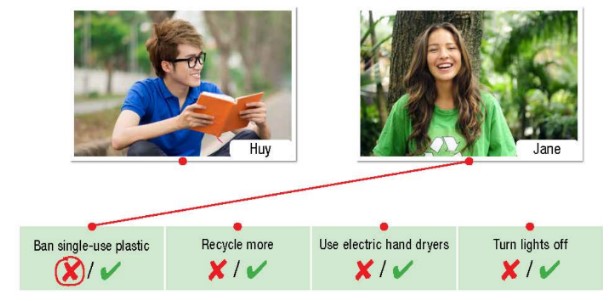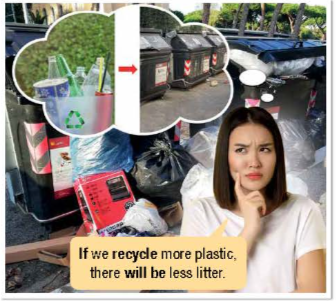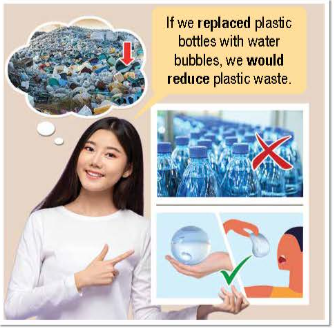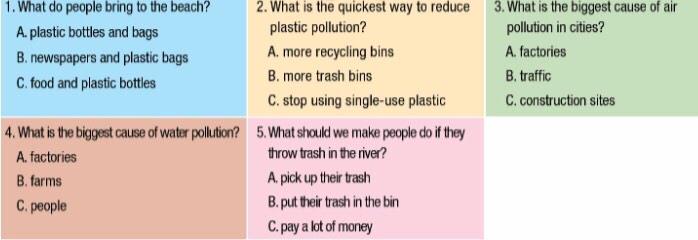Giải SGK, SBT Unit 8. Ecology and the Environment iLearn Smart World
Giải SGK, SBT Unit 8 iLearn Smart World
a. Match the words with the descriptions. Listen and repeat.
(Nối các từ với các mô tả. Nghe và lặp lại.)
|
1. ban 2. reduce 3. reuse 4. recycle 5. pollute 6. protect 7. damage |
a. keep someone or something safe, or stop something dangerous happening. b. make the environment dirty c. make trash (paper, glass, plastic, etc.) into a new product d. make something less or smaller e. officially stop people from doing something f. hurt someone or something g. use something again |
a. Match the words with the descriptions. Listen and repeat.
(Nối các từ với các mô tả. Lắng nghe và lặp lại.)
|
1. landfill 2. compost 3. livestock 4. deforestation 5. solution |
a. the animals we keep on farms, e.g. pigs and cows b. the act of cutting down or burning forests c. an answer to a problem d. change something into a mixture of materials that can be used to make plants grow better e. a place where trash is buried under the ground |
b. Match the problems with the solutions.
(Nối các vấn đề với các giải pháp.)
|
1. Loss of forests due to cattle farming (Mất rừng do chăn nuôi gia súc) 2. People dumping trash into rivers (Con người đổ rác xuống sông) 3. Poor crops due to bad soil (Cây trồng kém phát triển do đất xấu) 4. Air pollution from factories (Ô nhiễm không khí từ các nhà máy) |
a. Use new technology that produces less pollution. (Sử dụng công nghệ mới ít ô nhiễm hơn.) b. Eat less meat. (Ăn ít thịt.) c. Raise people's awareness and provide more trash cans. (Nâng cao nhận thức của mọi người và cung cấp nhiều thùng rác hơn.) d. Plant more trees and different crops each year. (Trồng nhiều cây hơn và các loại cây trồng khác nhau mỗi năm.) |
















